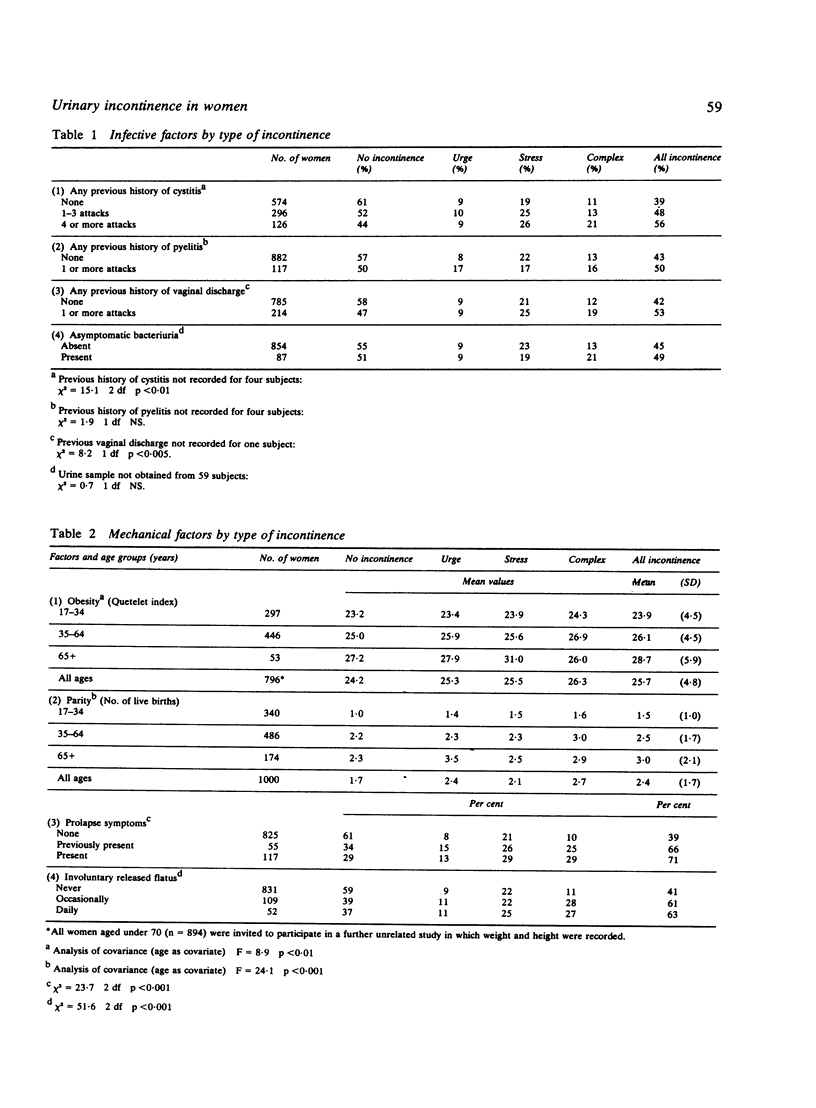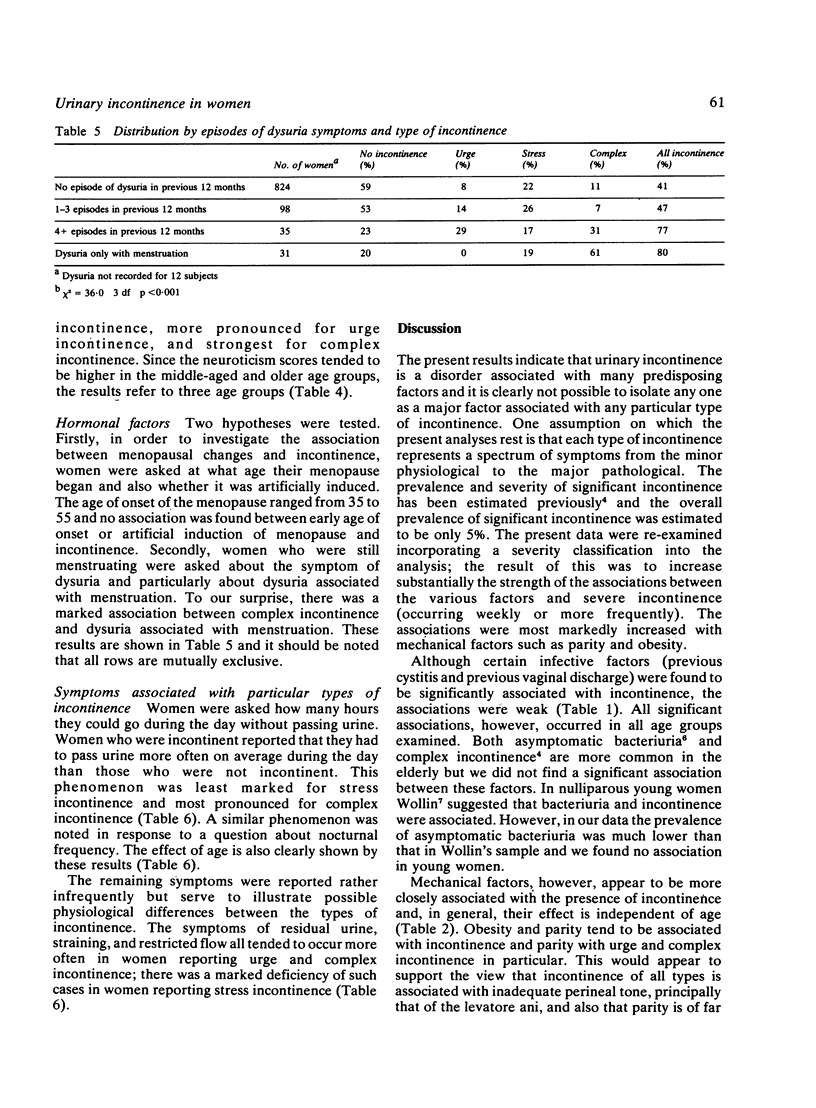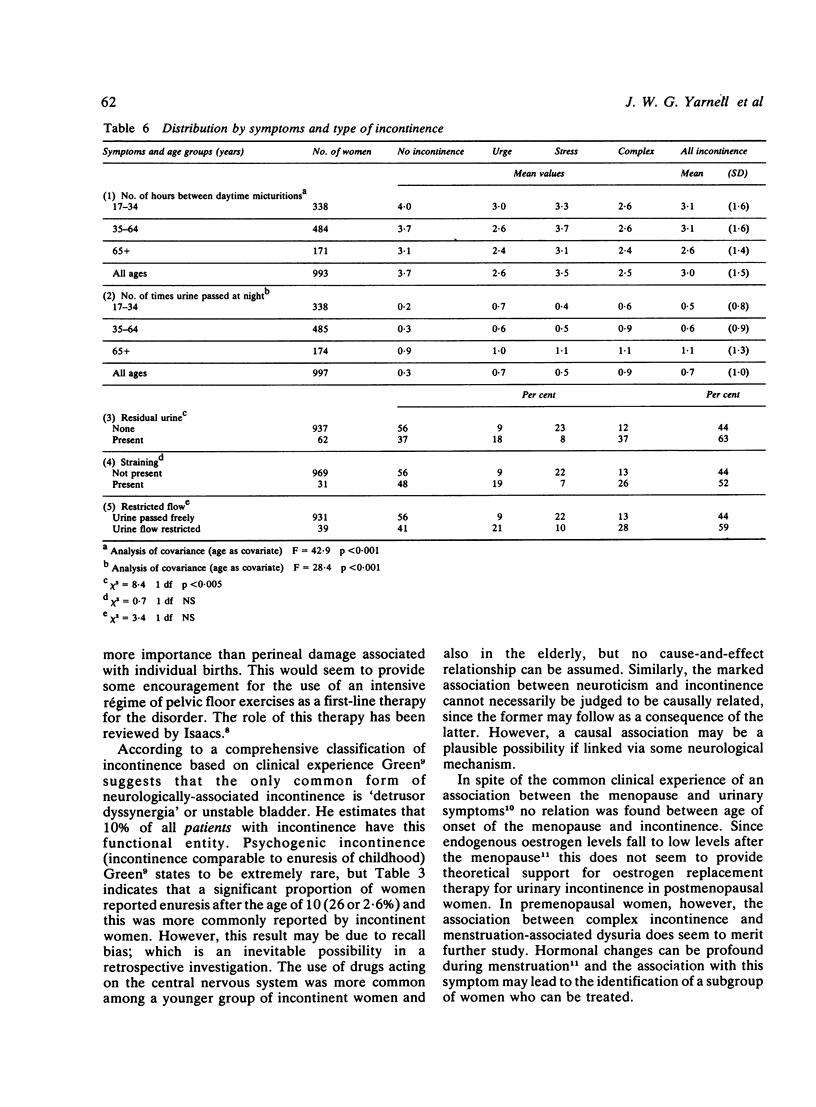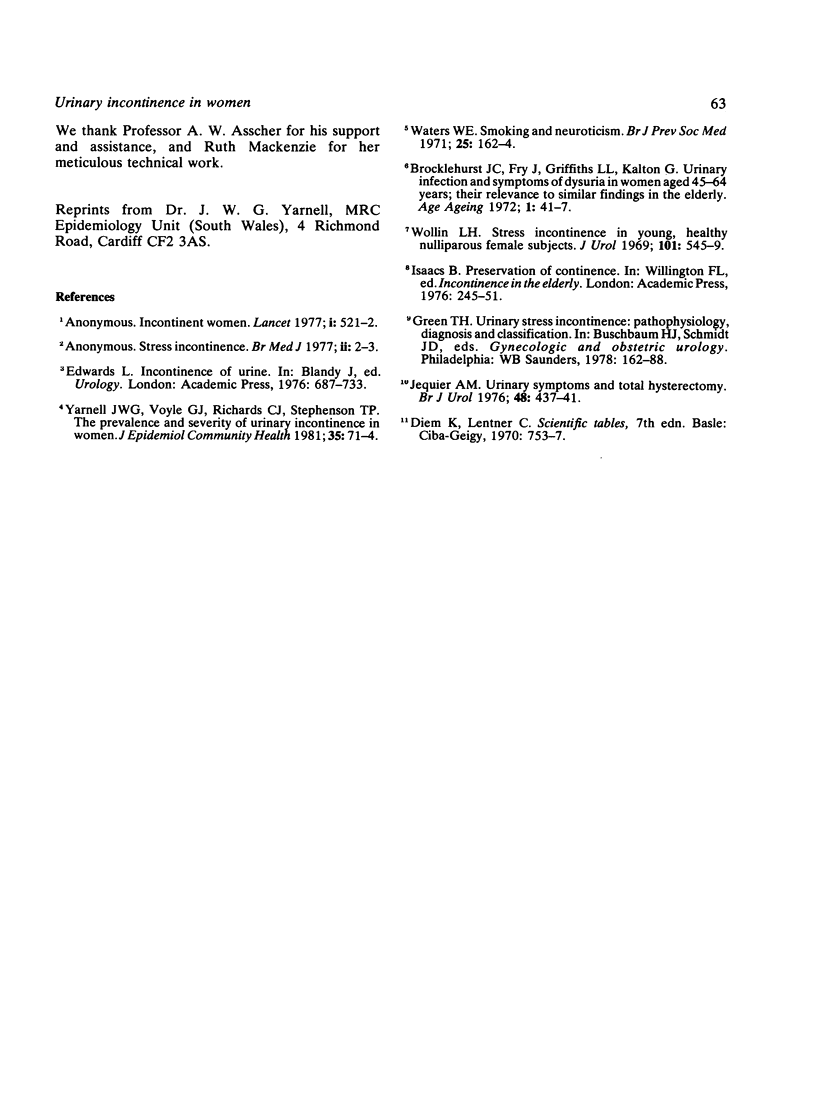Abstract
Possible aetiological factors for urinary incontinence were examined in a prevalence study among a random sample of 1000 women aged 18 and over. Infective factors were not markedly associated with incontinence but mechanical factors such as parity and obesity were. No association was found, however, between a history of perineal damage at childbirth and incontinence. Women with incontinence had on average a higher score for a 'neuroticism' trait elicited by questionnaire than women without the disorder.
Full text
PDF





Selected References
These references are in PubMed. This may not be the complete list of references from this article.
- Jequier A. M. Urinary Symptoms and total hysterectomy. Br J Urol. 1976 Dec;48(6):437–441. doi: 10.1111/j.1464-410x.1976.tb06676.x. [DOI] [PubMed] [Google Scholar]
- Waters W. E. Smoking and neuroticism. Br J Prev Soc Med. 1971 Aug;25(3):162–164. doi: 10.1136/jech.25.3.162. [DOI] [PMC free article] [PubMed] [Google Scholar]
- Wolin L. H. Stress incontinence in young, healthy nulliparous female subjects. J Urol. 1969 Apr;101(4):545–549. doi: 10.1016/s0022-5347(17)62378-4. [DOI] [PubMed] [Google Scholar]


